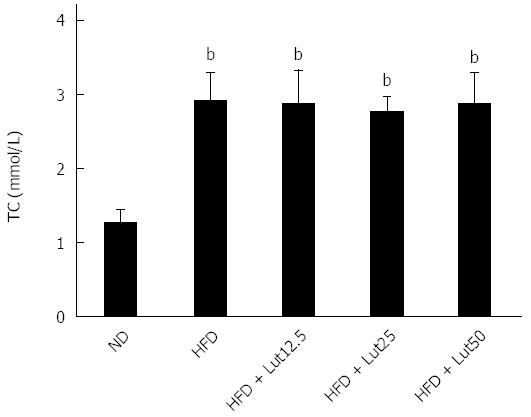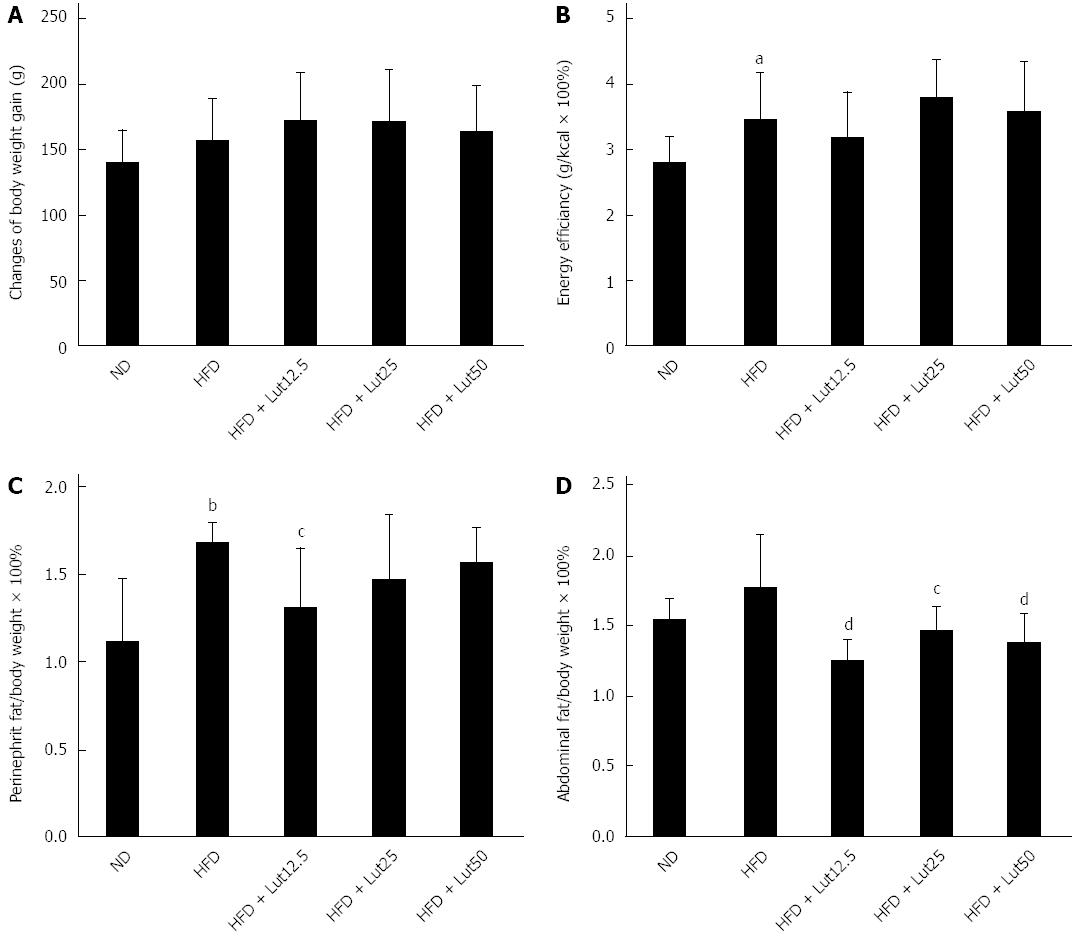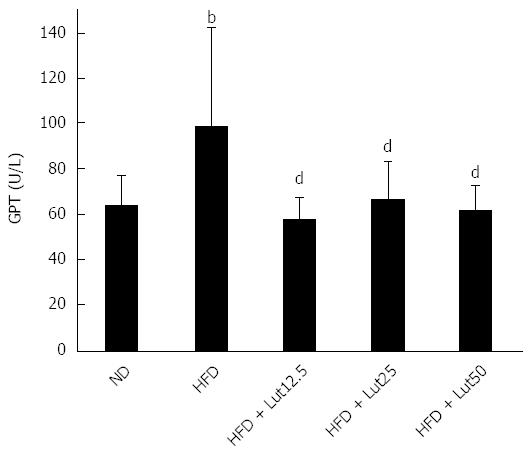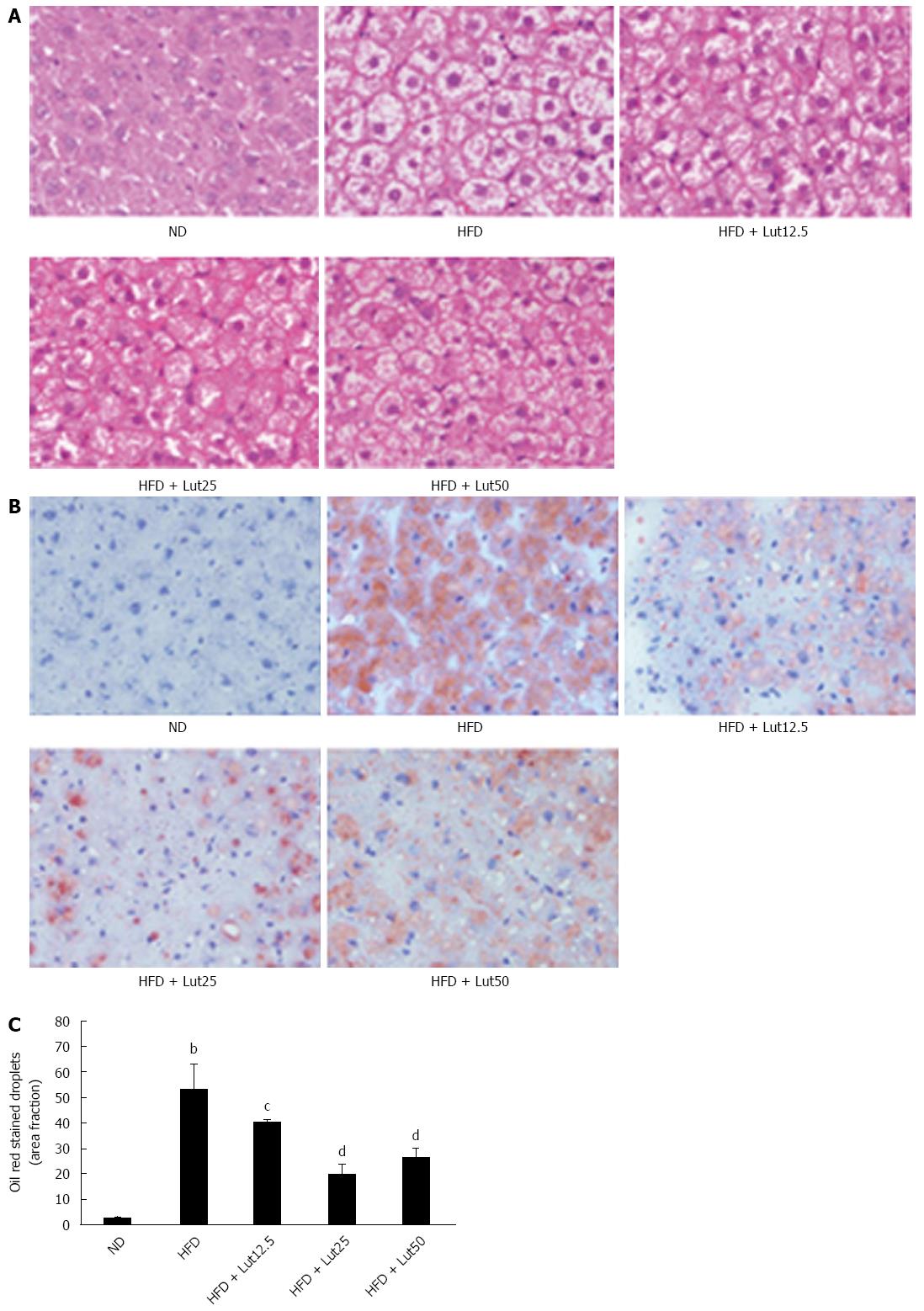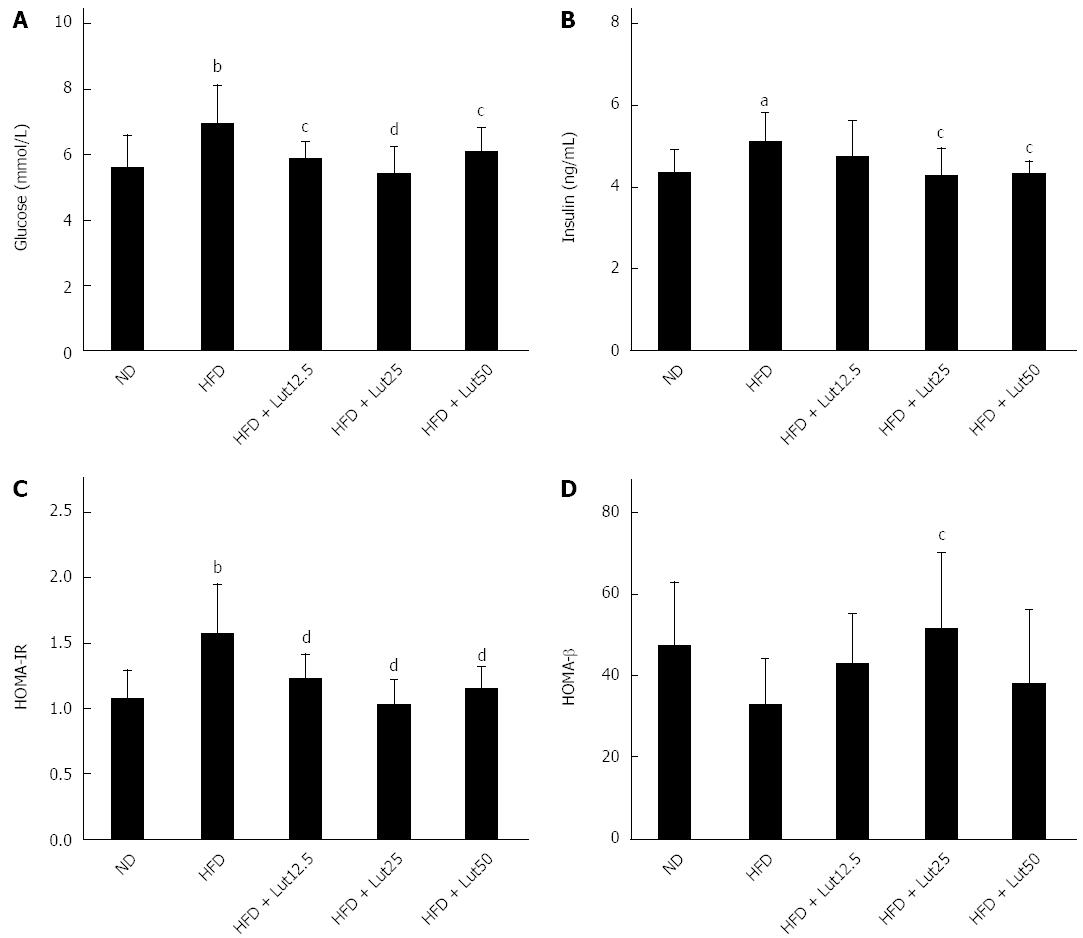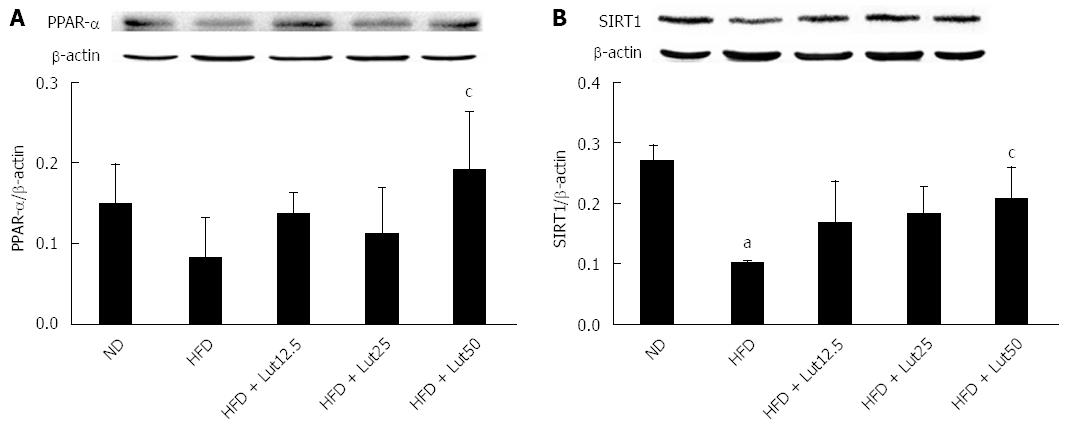Copyright
©The Author(s) 2015.
World J Gastroenterol. Jul 14, 2015; 21(26): 8061-8072
Published online Jul 14, 2015. doi: 10.3748/wjg.v21.i26.8061
Published online Jul 14, 2015. doi: 10.3748/wjg.v21.i26.8061
Figure 1 Changes in the basic physiological and biochemical responses of rats fed a high-fat diet.
The normal diet (ND) group (n = 8) was fed a standard diet and the high fat diet (HFD) group (n = 32) was fed a HFD for 10 d. The basic indicators included changes in body weight gain (A), energy efficiency (B), serum total cholesterol (TC) (C), and triglyceride (TG) (D). aP < 0.05, bP < 0.01 vs ND group.
Figure 2 Levels of total cholesterol in rats divided into 4 groups.
Rats were fed with normal diet or a high fat diet for 10 d, and then the high fat diet (HFD)-fed rats were divided randomly into four groups based on total cholesterol. Data are expressed as the mean ± SD (n = 8). bP < 0.01 vs the normal diet (ND) group.
Figure 3 Effects of lutein on rats fed a high-fat diet.
After being stratified into 4 groups based on total cholesterol, the rats were fed a high fat diet (HFD) plus 0, 12.5, 25, or 50 mg/kg body weight/d lutein for 45 d. Factors including body weight (A), energy efficiency (B), perinephric fat index (C), and abdominal fat index (D) were examined. Data are expressed as the mean ± SD (n = 8). aP < 0.05, bP < 0.01 vs normal diet (ND) group, cP < 0.05, dP < 0.01 vs HFD group.
Figure 4 Lutein influences glutamic pyruvic transaminase in rats fed a high-fat diet.
Rats were fed a high fat diet (HFD), except for the normal diet (ND) group, and lutein was administrated at doses of 12.5, 25, or 50 mg/kg body weight/d on the 10th day. Data are expressed as the mean ± SD (n = 8). aP < 0.05 vs the ND group, cP < 0.05, compared to the HFD group. bP < 0.01 vs ND group, dP < 0.01 vs HFD group.
Figure 5 Lutein prevented hepatic lipid accumulation in rats fed with high-fat diet.
Hematoxylin and eosin (H&E) stain (A) and Oil Red O stain (B) of liver sections are shown. Original magnification × 400. Quantitative analysis of hepatic fat accumulation is shown (C). Data are normalized to % of field area and represent the mean ± SD. bP < 0.01 vs the normal diet (ND) group, cP < 0.05, dP < 0.01 vs the high fat diet (HFD) group (n = 3).
Figure 6 Lutein’s effect on fasting glucose (A), fasting insulin (B), HOMA-IR (C), and HOMA-β (D) in rats fed a high-fat diet.
After the 45-d lutein intervention, fasting glucose was tested as described and fasting insulin was measured using an insulin ELIZA kit following the manufacturer’s instructions. HOMA-IR = FIN × FPG/22.5, HOMA-β = 20 × FIN/(FPG-3.5). aP < 0.05, bP < 0.01 vs the normal diet (ND) group, cP < 0.05, dP < 0.01 vs high-fat diet (HFD) group. Data are expressed as the mean ± SD (n = 8).
Figure 7 Lutein supplementation improved insulin signaling in rat liver.
Effects of lutein on the mRNA expression of IRS2 (A), PI3K (B), and GLUT2 (C) in rat liver (n = 4). Total RNA was extracted from rat livers using TRIzol. IRS2, PI3K, and GLUT2 expression was analyzed by Real-Time RT-PCR. β-actin mRNA was quantified as an endogenous control. IRS2, PI3K, and GLUT2 are presented as fold changes relative to the control. Effect of lutein on the protein expression of hepatic IRS2 (D), PI3K (E), and GLUT2 (F) in rats (n = 3). After the rats were treated with lutein for 45 d, hepatic lysates were prepared and immunoblotted with corresponding antibodies. Blotting with anti β-actin was used as a protein loading control. Data are expressed as the mean ± SD. aP < 0.05 vs normal diet (ND) group; cP < 0.05 vs the high-fat diet (HFD) group.
Figure 8 Lutein supplementation improved the expression of peroxisome proliferators activated receptor-α and sirtuin 1 in rat liver.
After the rats were treated with lutein for 45 d, the hepatic lysates were prepared and immunoblotted with corresponding antibodies. Blotting with anti β-actin was used as a protein loading control. Data are expressed as the mean ± SD (n = 3). aP < 0.05 vs normal diet (ND) group; cP < 0.05 vs the high-fat diet (HFD) group.
- Citation: Qiu X, Gao DH, Xiang X, Xiong YF, Zhu TS, Liu LG, Sun XF, Hao LP. Ameliorative effects of lutein on non-alcoholic fatty liver disease in rats. World J Gastroenterol 2015; 21(26): 8061-8072
- URL: https://www.wjgnet.com/1007-9327/full/v21/i26/8061.htm
- DOI: https://dx.doi.org/10.3748/wjg.v21.i26.8061










